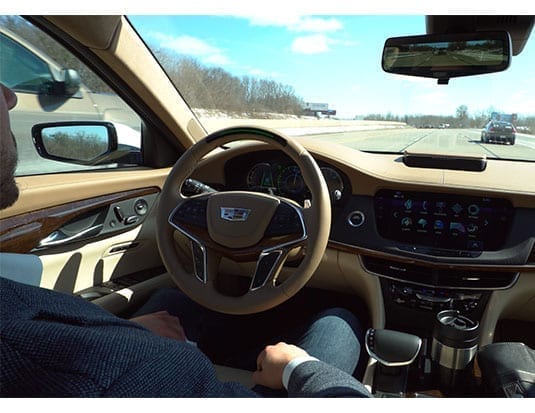SAE International, Ford, General Motors (GM) and Toyota have come together to form the Automated Vehicle Safety Consortium (AVSC).
The AVSC has been created to work to safely advance testing, pre-competitive development and deployment of SAE Level 4 and 5 automated vehicles. Its primary responsibility will be to establish a safety framework around which autonomous technology can evolve responsibly before broad deployment. Besides informing and advancing the development of industry standards for autonomous vehicles (AVs), the ultimate aim of AVSC’s work is to align with the efforts of other consortia and standards bodies around the globe.
“Being able to advance the safe deployment of SAE Level 4 and Level 5 automated vehicles represents another exciting chapter in the realization of autonomous mobility and the benefits this will bring to people around the world,” says Edward Straub, DM, Executive Director of the Automated Vehicle Safety Consortium. “To achieve these benefits, industry collaboration, cohesion and flexibility to merge new ideas with proven safety processes are critical. This is why we are forming the AVSC and announcing our roadmap strategy.”
Being global vehicle manufacturing giants, Ford, General Motors and Toyota have years of experience in developing and deploying safe and trusted vehicles. As part of their long-established commitment to reliability and safety, the companies share a common interest in safe deployment of autonomous vehicles.
The AVSC seeks to establish a set of AV safety guiding principles by leveraging the expertise of all its current and future members. Its first task will be to design a roadmap of priorities. The focus of this roadmap will be on data sharing, vehicle interaction with other road users and safe testing guidelines. The consortium intends it to be applicable for developers, manufacturers, as well as integrators of automated vehicle technology.
“We understand that autonomous vehicles need to operate safely and reliably in concert with infrastructure and other road users to earn the trust of the communities in which they are deployed,” explains Randy Visintainer, Chief Technology Officer, Ford Autonomous Vehicles. “Our goal with the consortium is to work with industry and government partners to expedite development of standards that can lead to rule making.”
“Safety is at the centre of everything we do at General Motors, and that’s certainly the case with our development of self-driving technology,” notes John Capp, Director of Global Vehicle Safety at GM. “We are eager to bring our experience to this consortium and to collaborate with other like-minded companies, so we can realize the true benefits of this technology and work toward a future with zero crashes, zero emissions and zero congestion.”
“Industry collaboration in areas that act as a foundation of automated driving systems and vehicles, such as infrastructure or social systems, is a significant step for us to achieve safe deployment of autonomous vehicles,” adds Kelly Kay, Toyota Research Institute EVP and Chief Safety Officer. “The formation of this consortium creates a forum to collaborate and cooperate with various stakeholders who will play important roles in forming and synthesizing the automated vehicle eco-system of tomorrow.”
To convene the members of the AVSC, SAE International plans to leverage the experience of its affiliate organization, SAE Industry Technologies Consortia (SAE ITC). Currently, the automotive industry is utilizing SAE ITC’s successful aerospace industry-managed consortia model.
In a release by SAE, the organization has promised to share the vision and progress of the AVSC throughout the year, including at SAE International’s World Congress Experience (WCX) April 9-11 this year in Detroit.



